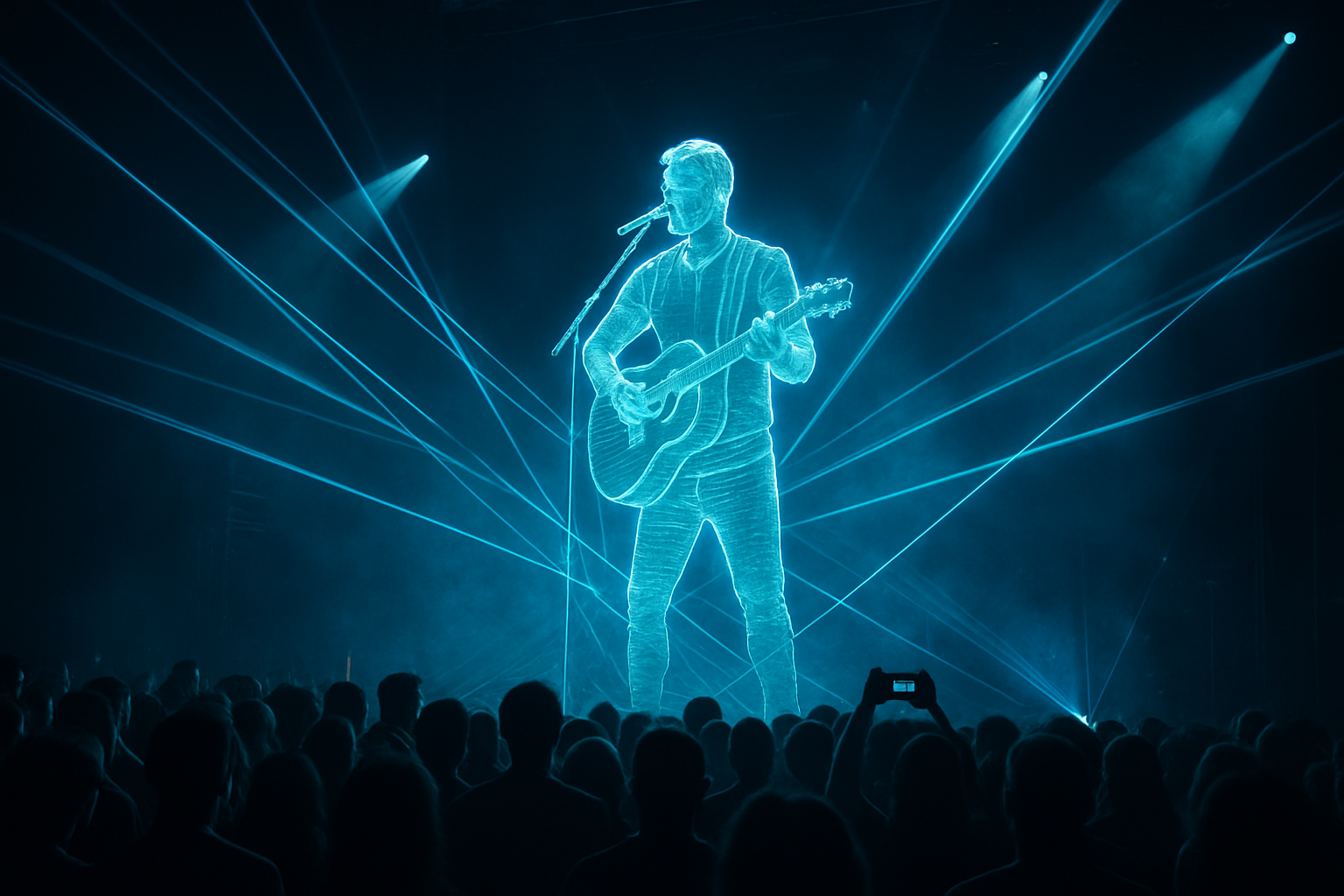Hologram Concerts: Redefining Live Music Experiences
The convergence of cutting-edge technology and live music performances has given birth to a groundbreaking phenomenon: hologram concerts. This innovative approach to entertainment is reshaping the landscape of the music industry, offering fans unprecedented access to iconic performers and pushing the boundaries of artistic expression. As holographic technology continues to evolve, it presents both exciting opportunities and complex challenges for artists, promoters, and audiences alike. This article delves into the world of hologram concerts, exploring their impact on the music industry and the implications for the future of live entertainment.

Technological Marvels Behind the Spectacle
At the heart of hologram concerts lies a complex interplay of cutting-edge technologies. High-definition projectors, motion capture systems, and advanced computer graphics come together to create stunningly realistic three-dimensional images of performers. These projections are often combined with live musicians, dancers, and elaborate stage designs to create immersive, multi-sensory experiences. Recent advancements in AI and machine learning have further enhanced the realism of holographic performances, allowing for more nuanced movements and interactions with the virtual artists.
Reviving Legends and Crossing Boundaries
One of the most compelling aspects of hologram concerts is their ability to bring deceased artists back to the stage. From Whitney Houston to Roy Orbison, holographic technology has allowed fans to experience the magic of legendary performers long after their passing. These posthumous performances raise intriguing questions about artistic legacy, copyright, and the ethics of digital resurrection. Beyond reviving past icons, hologram concerts also enable living artists to perform in multiple venues simultaneously or collaborate with their younger selves, opening up new creative possibilities and challenging traditional notions of live performance.
The Economics of Virtual Stardom
Hologram concerts represent a significant shift in the business model of live music. While the initial investment in technology and production can be substantial, these virtual performances offer unique economic advantages. Artists can tour without the physical strain and logistical challenges of traditional concerts, potentially reaching wider audiences across multiple time zones. For venue owners and promoters, hologram concerts provide opportunities to host high-profile events with reduced overhead costs. However, this new paradigm also raises concerns about job displacement for touring musicians and crew members, as well as the potential oversaturation of the market with virtual performances.
Audience Reception and the Future of Fan Engagement
The reception of hologram concerts has been mixed, with some fans embracing the innovative technology and others feeling it lacks the authenticity of a traditional live performance. Younger generations, more accustomed to digital experiences, tend to be more receptive to holographic shows. As the technology improves, the line between virtual and physical performances continues to blur, challenging our perceptions of what constitutes a live music experience. This evolution in fan engagement opens up new possibilities for interactive concerts, personalized performances, and hybrid events that combine physical and virtual elements.
Ethical Considerations and Artistic Integrity
The rise of hologram concerts has sparked intense debates about artistic integrity, consent, and the commodification of artists’ likeness. Questions arise about who has the right to authorize and profit from posthumous performances, and how to ensure that these digital recreations accurately represent the artist’s vision and legacy. There are also concerns about the potential for misuse of this technology, such as creating unauthorized or manipulated performances. As hologram concerts become more prevalent, industry stakeholders are grappling with the need for new legal frameworks and ethical guidelines to protect artists’ rights and maintain the integrity of their work.
Looking Ahead: The Evolution of Hologram Concerts
As holographic technology continues to advance, the future of hologram concerts looks increasingly dynamic and immersive. Emerging technologies like augmented reality (AR) and virtual reality (VR) are poised to further revolutionize the concert experience, allowing for more interactive and personalized encounters with virtual performers. Some experts predict a future where fans can attend hologram concerts from the comfort of their homes, using VR headsets to fully immerse themselves in the performance environment. These developments raise intriguing possibilities for global cultural exchange, as artists from different eras and cultures can be brought together in unprecedented collaborations.




